Fundamentals of dynamic road driving
This small vademecum was born with the aim of being able to transmit in a simple and explanatory way what are some of the fundamental principles for dynamic driving on the road.
This small vademecum was born with the aim of being able to transmit in a simple and explanatory way what are some of the fundamental principles for dynamic driving on the road.
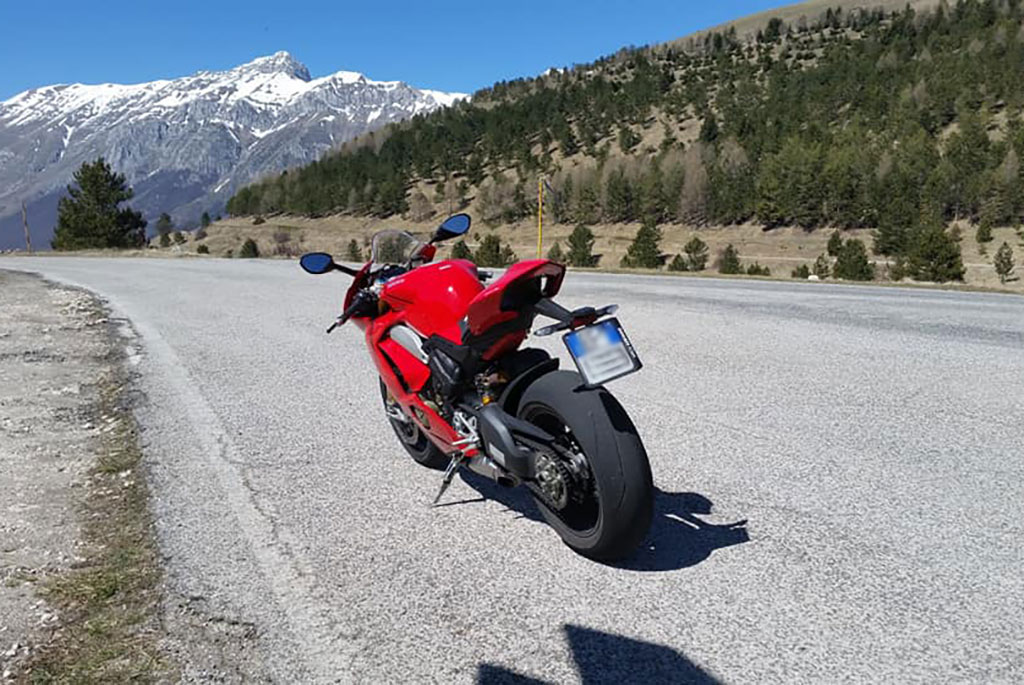
This small vademecum was born with the aim of being able to transmit in a simple and explanatory way what are some of the fundamental principles for dynamic driving on the road.
by Alessandro Bianchi.
Tyres are generally the key to understanding and revealing a motorcyclist’s riding style on the road. Or rather, in the kilometers in which they were driven, they manage to provide us with elements and details, such as to be able to give a clear overview of how they were used, thus revealing the driving profile of the rider who has used them up to that point.
The tires are an exceptional diagnostic tool, knowing how to read them they also manage to reveal any technical problems, especially in use on the track, referring to trim, suspension or weight distribution. Returning to road use, I often hear motorcyclists disquising about the famous “rubber closure”, which for many represents the obstacle and the goal to be achieved.
For those who are not aware of it, “rubber closure” means the achievement of such an inclination, to exploit and cover the total surface of the shoulder, thus resulting in the eye consumed up to the extreme edge without leaving the famous cm uncovered. Well, I would like to advise all those who aim to achieve this result, which is, moreover, completely irrelevant for the purposes of normal road driving, that first of all the approach that is simply aimed at bending more, aimed solely at achieving that objective, is wrong.
We often force our limits and abilities, perhaps with gimmicks that can prove dangerous. In addition, the problem focuses on the classic residue of the few centimeters that resist the closure of the shoulder, and that seem to remain unreachable. You get the feeling that you have bowed to the far-fetched, but then going to the situation nothing has changed !!!
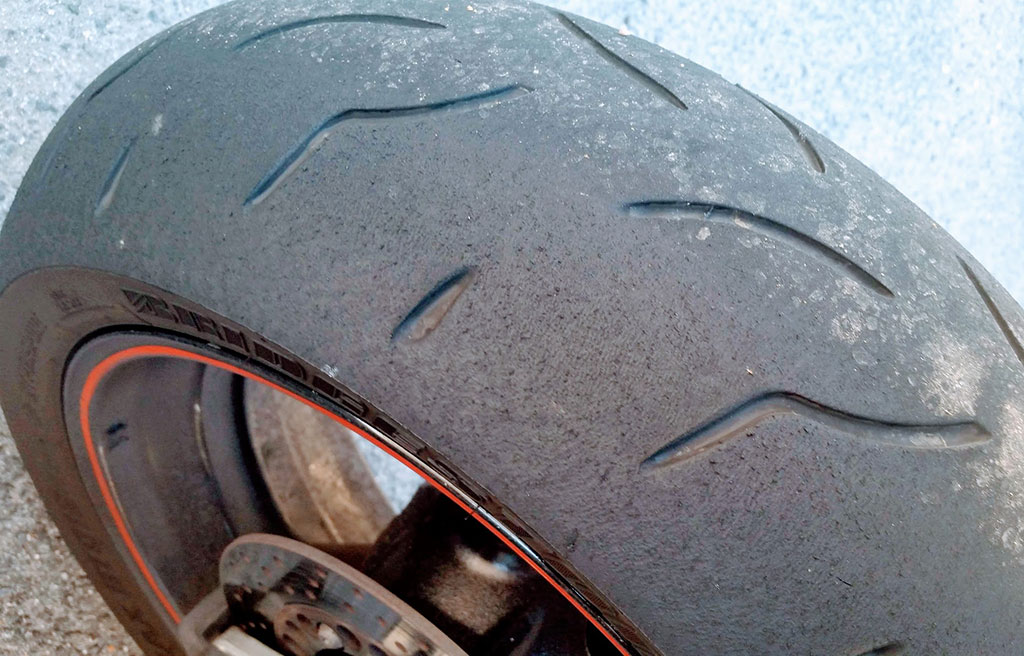
Let us try to understand better and give an explanation, precisely because those few residual centimeters, which seem insignificant, instead represent the tip of an iceberg that hides substantial problems related to our leadership. First of all, we must start from a couple of assumptions which are fundamental and preparatory in the management of this issue: firstly, there is security, this must be the fundamental prerequisite on which to approach our passion. Let us remember that we are on the road, the bike is first and foremost fun and entertainment, it must not be experienced as a challenge or in a competitive spirit, (I say this and I am deeply convinced of it, despite the fact that I have often not been a shining example). For that kind of wish there is the track, which obviously represents a diametrically opposed dimension.
When driving on the road you must never reach the limit of your possibilities, this would mean breaking down all the security reserves that we have, turning us into ungovernable bullets, unable to handle any unforeseen events.
Remember that the limit of each of us arises from the cognitive and visual evaluation of our brain that processing various data and factors, establishes parameters and characteristics that will then determine our guide.
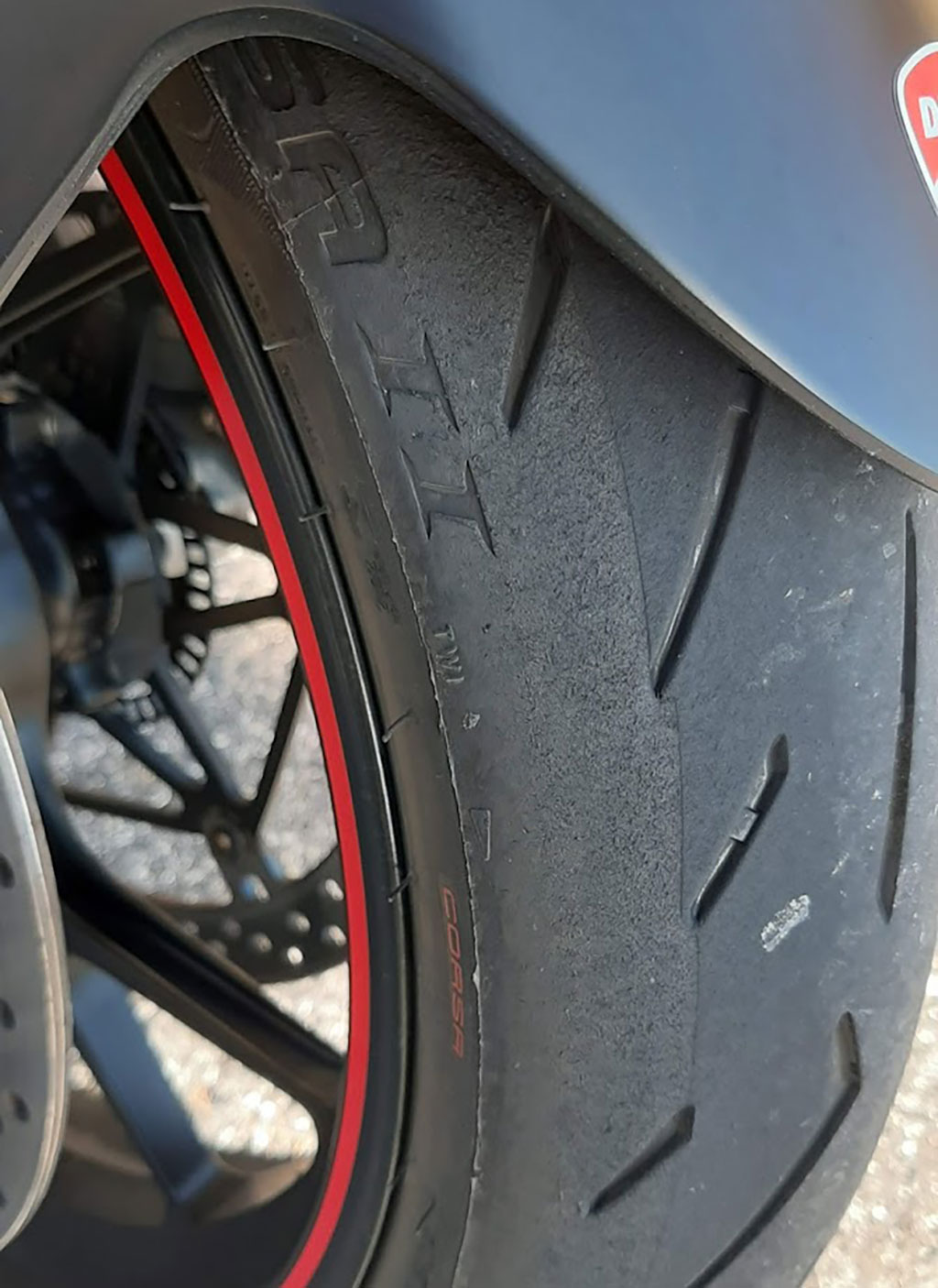 With regard to the discourse of “only a few centimeters”, know that these represent an insurmountable rock, for the simple fact that the rubber, with that dividing line and with that residual space, only visually shows us our limit. So often, behind what would seem to be a single and simple degree of inclination to be achieved, hide a set of much more complex factors that characterize our guide thus highlighting its merits and defects that reside in the interpretation of various elements such as: speed, travel, bend angle, then added to posture, rigidity, position of the head, etc. In short, from a myriad of variables that, united together, are the result that then visually translates on the rubber. At this point we wonder how we can arrive at a solution aimed at improving and correcting our driving without forcing and/or taking risks ? It is obvious that it is difficult to give completely theoretical and generalized answers, there is no absolute recipe, precisely because each of us has developed our own style of driving, absolutely subjective, which contains merits and defects. So solving with the theory alone, without being able to evaluate by examining the practical part, is not simple, but nevertheless you can give valid advice that can certainly help us understand the path to be pursued.
With regard to the discourse of “only a few centimeters”, know that these represent an insurmountable rock, for the simple fact that the rubber, with that dividing line and with that residual space, only visually shows us our limit. So often, behind what would seem to be a single and simple degree of inclination to be achieved, hide a set of much more complex factors that characterize our guide thus highlighting its merits and defects that reside in the interpretation of various elements such as: speed, travel, bend angle, then added to posture, rigidity, position of the head, etc. In short, from a myriad of variables that, united together, are the result that then visually translates on the rubber. At this point we wonder how we can arrive at a solution aimed at improving and correcting our driving without forcing and/or taking risks ? It is obvious that it is difficult to give completely theoretical and generalized answers, there is no absolute recipe, precisely because each of us has developed our own style of driving, absolutely subjective, which contains merits and defects. So solving with the theory alone, without being able to evaluate by examining the practical part, is not simple, but nevertheless you can give valid advice that can certainly help us understand the path to be pursued.
So let’s start by saying that one of the fundamental elements lies in “FLUIDITY”. Trying to break down one’s limits by forcing them on the road, as we have already said, is stupid, dangerous and especially does not bring results. The strong braking, the violent accelerations, the high speeds, with the forced entrances, produce important load transfers that reduce safety with the result of hanging, dirty driving, which on the road has no sense of existence. The driving pleasure is much more!! Smoothness and fluidity are the foundations for clean and effective driving. You start by learning to go “slow.” This is the most important phase because it is preparatory to a correct style, simple and dynamic. You can’t go strong if you don’t learn to go slow first and believe me that it’s harder than you might imagine.
The bike in road driving should never be raped, and it is only by going slowly that you really have the right to listen to it by entering into tune, trying to understand in total tranquility the behavior and reactions to your every request.
Take as the school base of the routes known to you and follow them slowly, taking care to “slide” the bike inside the curves.
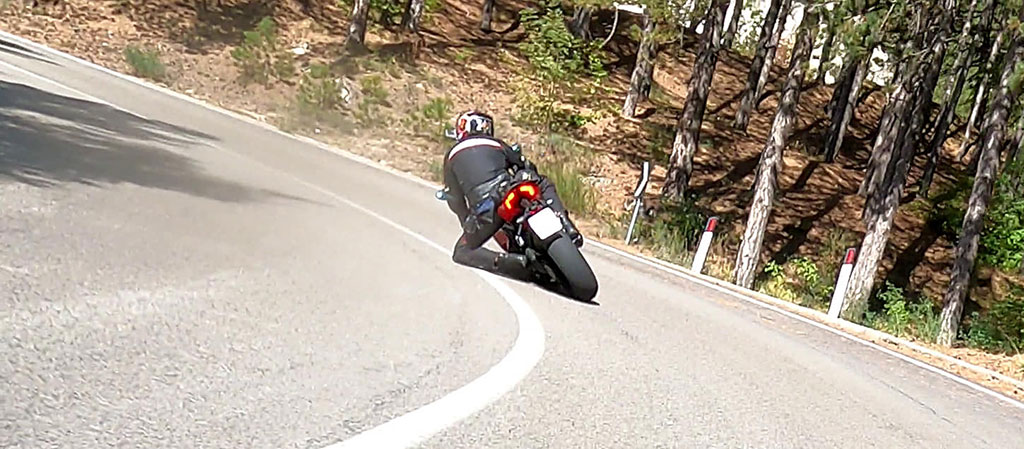
Try to be light and delicate in driving, go slow, speed is no use, at the moment you have to focus on being fluid and regular.
Brake as little as possible, in the corner input use the rear and little the front, so as not to generate load transfers that destabilize and dirty the guide.
Always be careful not to stick to the handlebars and not to give them strength, always be neutral and slide the bike on the road in the most “round” way possible.
Always walk the entire line of the curve without ever cutting it (of course you always stay well inside your lane). Gently bend the bike, favoring the journey with high gears that help to maintain a constant thrust and a stable and neutral trim.
In short, the bike must slide as smoothly as possible, so that you can travel a stretch of mixture with a guide so linear and constant that it is seamless, or without ever being interrupted by braking or accelerated.
These are the fundamental ingredients to achieve smoothness and effectiveness, and coincidentally, then those who are smooth and clean are also fast and effective. But what ultimately interests us is not being fast, but the beauty and taste of the sensations that can be perceived without special effort.
Never fossilize yourself to the mark on the rubber by forcing the limit to persist in looking for the maximum fold for its own sake, also because the angle of inclination is the result of your interpretation of the curve added to the travel speed. Rather try to apply these rules which are the foundations for smooth and safe driving. The moment you have acquired these characteristics, you will realize that the limit will move forward without you noticing them and with absolute naturalness.
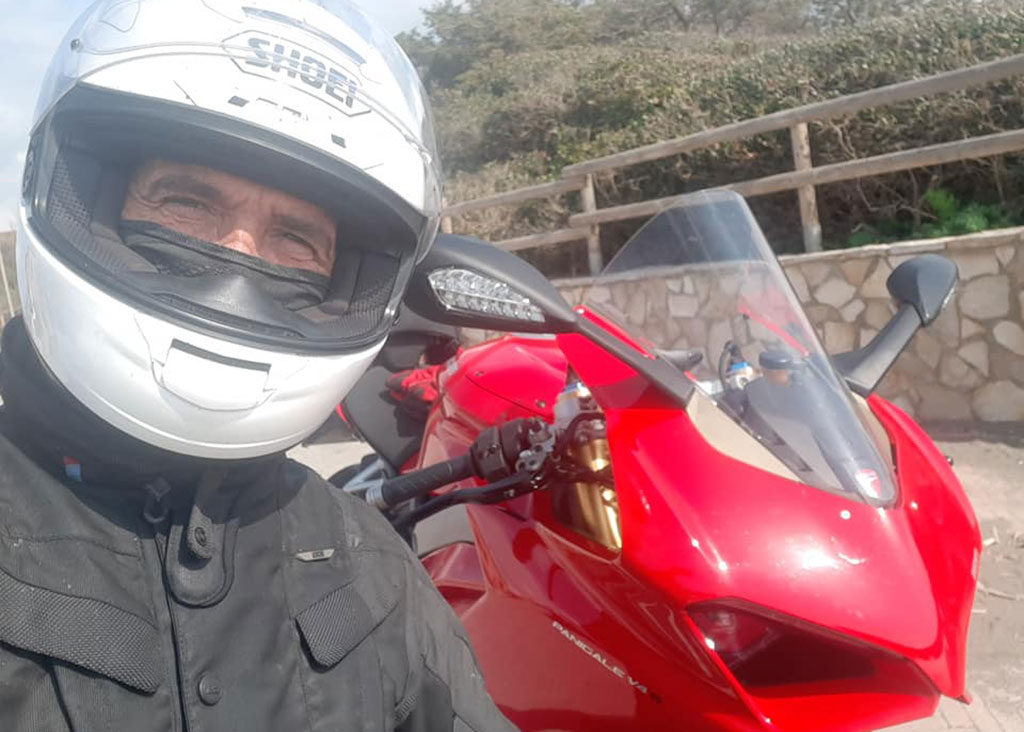
Another fundamental aspect, ground kilometers !!!!! The more you are riding and the more you develop affinity and confidence with your bike, the experience is everything ! It is impossible to demand results using the bike in a completely occasional way.
If you are overtaken by someone who is faster, let them go, often in vain trying to reach it, you risk unnecessarily doing imprudence, such as starting to cut corners or ending up in the opposite lane, putting you and others at serious risk, with the real possibility of ending up on the ground. Remember that our limit is in our head and each of us has our own, forcing it would solve nothing.
Never improvise a sports guide on routes never made.
It is only by doing so much practice that concrete results are achieved. The most obvious will be to be able to see a more homogeneous consumption of the rubber, and therefore also a longer life, especially appreciating a better driveability of the vehicle. In fact, obtaining a uniform consumption shifted even on the extreme edge of the shoulder, it will reduce the tendency of the rubber to step, that is to generate that thickness differential between the area of greatest consumption and the one where the consumption remains almost non-existent, thus creating that annoying difference in height that affects driving in terms of precision and descent into the fold.
In summary, do not look for immediate results, haste is the worst enemy, never force driving, improvements are achieved calmly and timefully, especially learning about your bike. Only by going slowly can you understand your own medium by creating feeling and empathy. To go strong you must first learn to go slow !!
Good way to all biker’s !!!

A Jerez de la Frontera, seconda tappa del campionato SBK, si ri-accende lo spettacolo con Ducati protagonista. Doppietta di Redding e secondo posto in gara 2 per Davies.
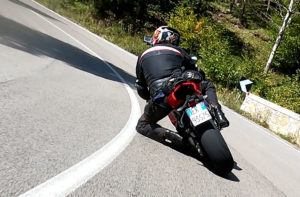
Alcune considerazioni da parte di chi la Panigale V4 S ce l’ha da un po’, ci ha fatto un bel po’ di chilometri e… “qualche” piega.
Cuoredesmo è il magazine online per gli appassionati del mondo Ducati. Nasce in collaborazione con Mondo Ducati, storica rivista dedicata alla Casa di Borgo Panigale.
